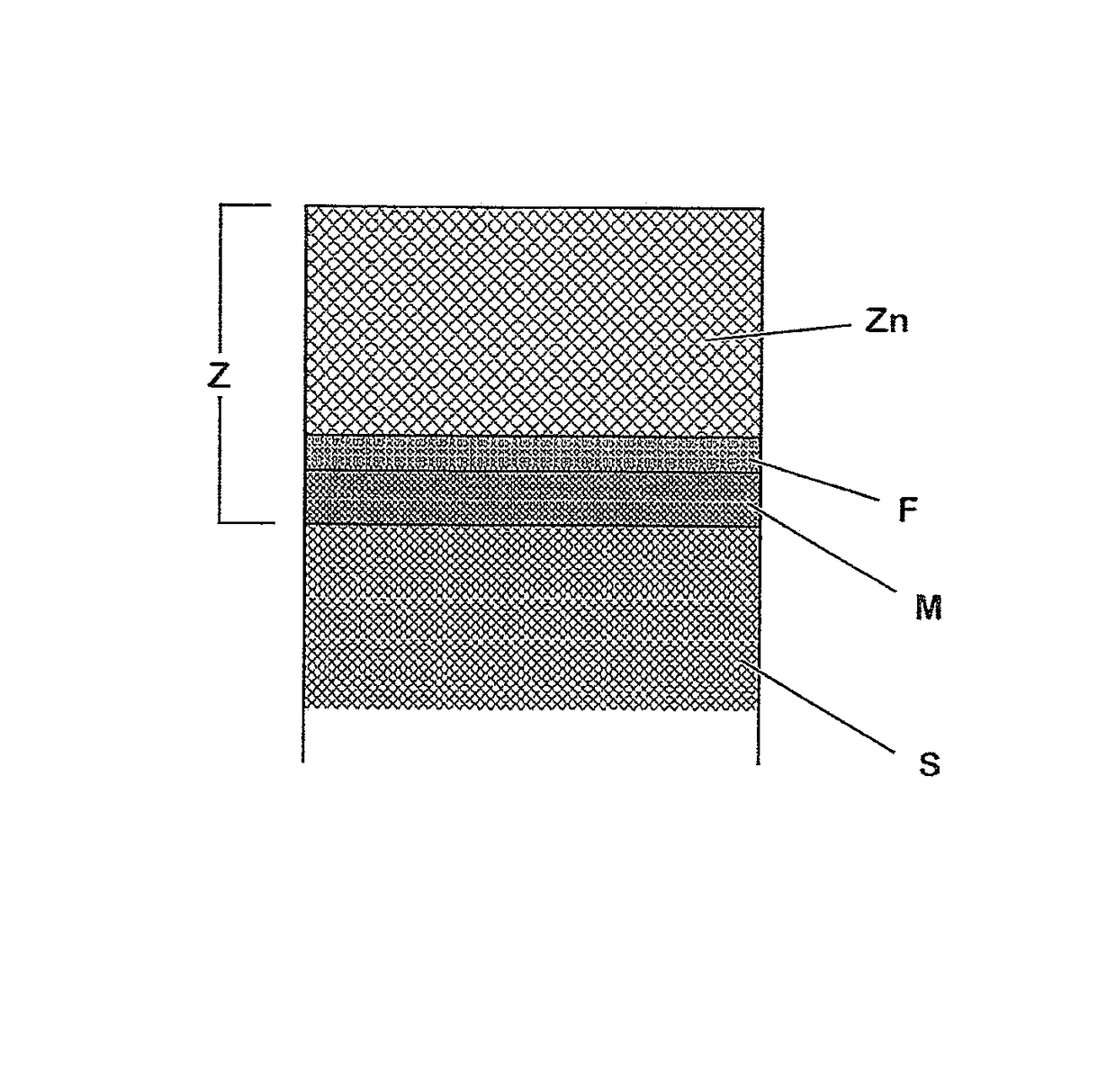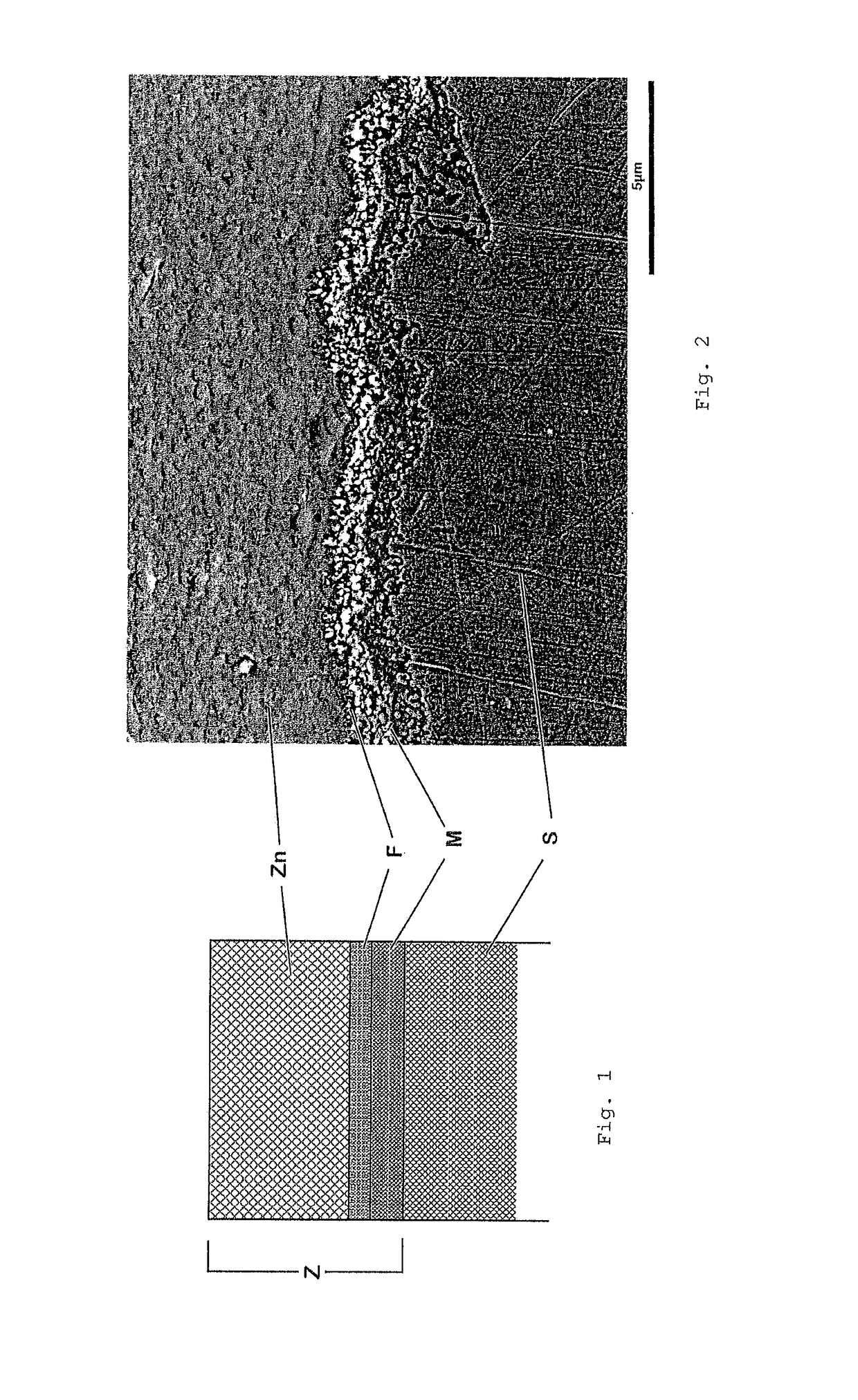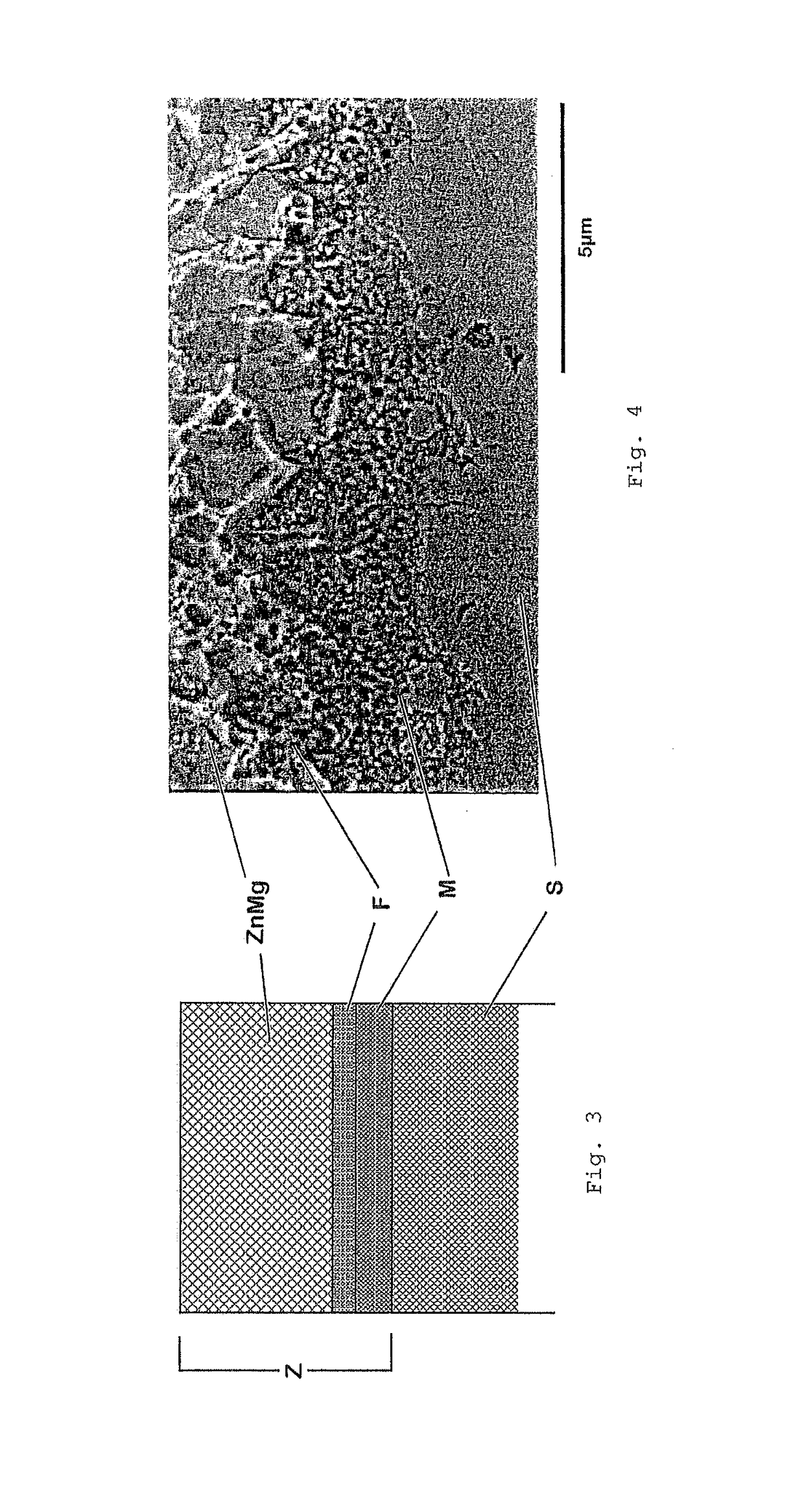Method for the hot-dip coating of a flat steel product containing 2-35 wt.% of Mn, and a flat steel product
a flat steel product and flat technology, applied in hot-dipping/immersion processes, coatings, metallic material coating processes, etc., can solve the problems of high-manganese steels that are difficult to passivate, high-alloy sheet steels that are difficult to use in the very field of bodywork construction, and the risk of cracking or peeling is minimised. , the effect of optimum adhesion
- Summary
- Abstract
- Description
- Claims
- Application Information
AI Technical Summary
Benefits of technology
Problems solved by technology
Method used
Image
Examples
Embodiment Construction
[0049]Cold-rolled steel strip was produced in a known way from a high-manganese steel of the composition given in Table 1.
[0050]
TABLE 1CMnPSiVAlCrTiNb0.63422.20.020.180.20.010.080.0010.001Remainder iron and unavoidable impuritiesFigures are in wt. %
[0051]A first specimen of the cold-rolled steel strip was then annealed in an annealing process carried out in a single stage.
[0052]For this purpose, the specimen of steel strip was heated at a heating rate of 10 K / s to an annealing temperature Ta of 800° C. at which the specimen was then held for 30 seconds. The annealing took place in this case under an annealing atmosphere of which 5 vol. % comprised H2 and 95 vol. % comprised N2 and whose dew point was +25° C. The annealed steel strip was then cooled at a cooling rate of 20 K / s to a temperature for bath entry of 480° C., at which it was first subjected to an over-ageing treatment for 20 seconds. The over-ageing treatment took place in this case under the unchanged annealing atmosphere...
PUM
| Property | Measurement | Unit |
|---|---|---|
| thick | aaaaa | aaaaa |
| temperature | aaaaa | aaaaa |
| thickness | aaaaa | aaaaa |
Abstract
Description
Claims
Application Information
 Login to View More
Login to View More - R&D
- Intellectual Property
- Life Sciences
- Materials
- Tech Scout
- Unparalleled Data Quality
- Higher Quality Content
- 60% Fewer Hallucinations
Browse by: Latest US Patents, China's latest patents, Technical Efficacy Thesaurus, Application Domain, Technology Topic, Popular Technical Reports.
© 2025 PatSnap. All rights reserved.Legal|Privacy policy|Modern Slavery Act Transparency Statement|Sitemap|About US| Contact US: help@patsnap.com



